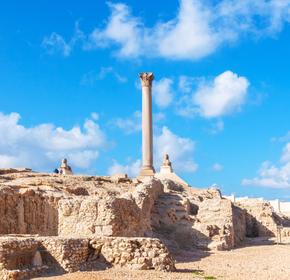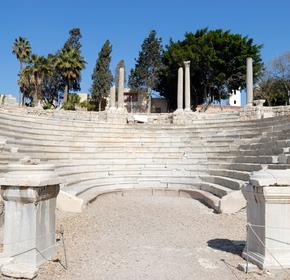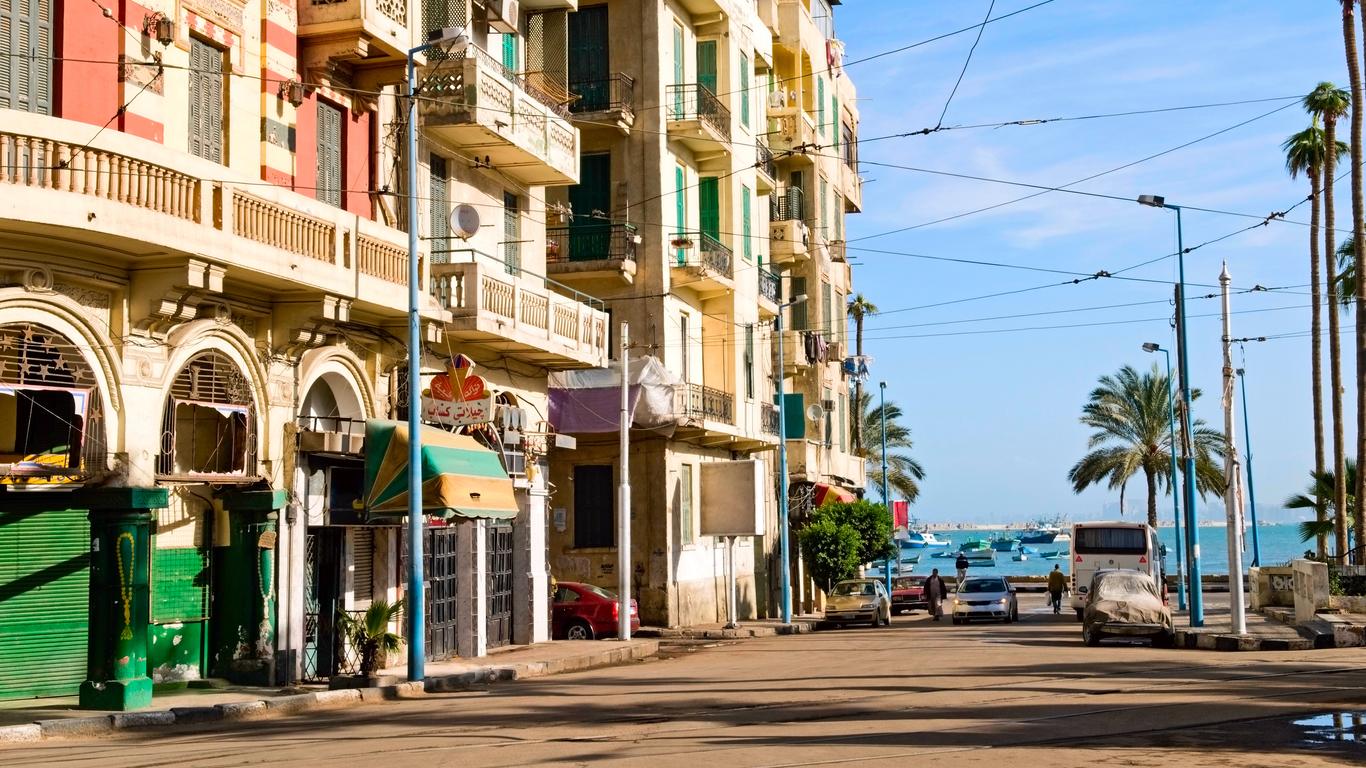
Alexandria travel guide
Alexandria Tourism | Alexandria Guide
You're Going to Love Alexandria
One of the great centers of learning in the ancient world and famous for its beautiful harbor, Alexandria has seduced poets, novelists, and travelers for centuries. With its unique blend of European and Middle Eastern culture, there's nowhere quite like Alexandria.
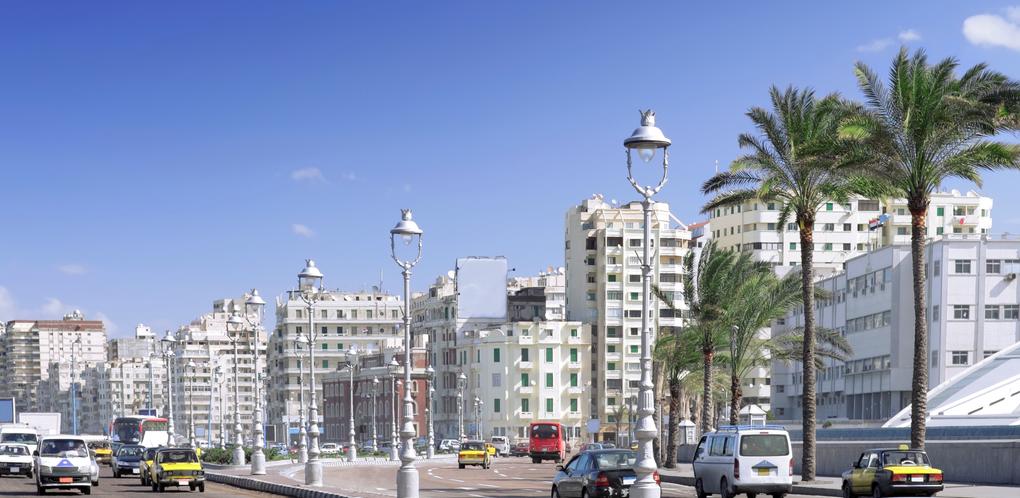
Where else can you tour ancient ruins like the Pharos Lighthouse and the Great Library, before visiting elegant 19th-century theaters and galleries to see works by modern Egyptians and classical concerts?
This modern city is fast becoming Egypt's cultural nexus as well. It's where novelists, musicians, artists, and playwrights come to show off their skills. Add to that wonderful seafood, lively markets, and a burgeoning nightlife scene, and you've got a true Mediterranean marvel.
Top 5 Reasons to Visit Alexandria
1. An Incredible Ancient Heritage
Alexandria was founded by the Macedonian conqueror Alexander the Great more than 2,300 years ago, and it quickly became one of the ancient world's cultural capitals. Nowadays, you can visit the Alexandria National Museum to find out about its beauty and remarkable buildings, see the spooky Roman Catacombs of Kom ash-Shuqqafa, and the beautiful floor mosaics at the Villa of the Birds.
2. Islamic Architecture to Take Your Breath Away
It's not all about Greeks and Romans either. Alexandria had another period of greatness under the Mamluk period from the 13th to 16th centuries and modern tourists can tour medieval highlights like the Abu al-Abbas al-Mursi. There are also more modern Islamic buildings that are equally impressive, like the 17th-century Turbana Mosque and the Citadel of Qaitbay.
3. The Mediterranean Is on Alexandria's Doorstep
If the heat of the city becomes too much, Alexandria is the kind of place where you can hit the beach and immerse yourself in the cool waters of the Mediterranean whenever you need to. City beaches like Maamoura have special areas where a small fee can buy you plenty of space to stretch out.
4. It's Egypt's Modern Cultural Capital
Egypt is the most important country in the Arab world when it comes to books, cinema, and music, and Alexandria is its cultural center. Head to modern attractions like the stunning Bibliotheca Alexandrina, pick through the English-language books at the street market on Nabi Daniel Street, or be there during the world-famous Alexandria Film Festival in September.
5. Fantastic Food Can Be Found in Every Neighborhood
Alexandria has Egypt's most dynamic restaurant scene as well. If you love seafood, don't miss local favorites like Byblos, Athineos, or Al-Farouk Restaurant (which is housed in what used to be the office of King Farouk). Don't miss literary cafes like Elite either, which used to attract writers like D.H. Lawrence during the 1920s.
What to do in Alexandria
1. Pompey's Pillar: A Memorial to Diocletian
This triumphal column is one the largest monoliths ever erected in the age of the Roman Empire, and the last ancient monument left in the city of Alexandria. At over 80 feet tall and weighing hundreds of tons, this massive pillar of red sandstone is staggering. Nearby, a wonder of the medieval world hides beneath the ground: the Catacombs of Kom el Shoqafa. This burial site, thousands of years old, is held up by Roman columns and painted with Egyptian motifs - an eerie space to wander.
2. Bibliotheca Alexandrina: Risen from the Ashes
Set on the gorgeous Mediterranean, this contemporary rendition of the Alexandria Library attempts to revive the glory of its ancient counterpart, burned to the ground during antique times. The scale of the new building is vast, with world-renowned architecture dazzling from tip to toe. Millions of books are housed here, reading room spaces include facilities for the blind, as well as for children. The National Museum and a planetarium are also found inside.
3. Montaza Palace: Mediterranean Masterpiece
Set amidst gardens and overlooking a beach on the sparkling Mediterranean Sea, this palace is a must-see. The architecture combines Turkish and Florentine influences, an indication of the conglomeration of cultures found in Alexandria throughout the ages. Ornate and delicate, the palace finds itself in its own little paradise - royal gardens are open to the public for hours of leisure, and long open halls built into the structure lead visitors to views of the sea.
4. Citadel of Qaitbay: In Defense of the City
For centuries the defense of Alexandria relied on this 15th-century fortress, one of the most important fortifications on the entire Mediterranean coast. Built on the site of the destroyed Lighthouse of Alexandria, once a Wonder of the Ancient World, this citadel has withstood the test of time. Visitors can wander the ancient ramparts and enjoy some historical context in the Qaitbay Maritime Museum. And for a trip further afield, check out the Ras el-Tin Palace just thirty minutes away.
5. Kom el-Dikka: Fancy Remants
The Roman Amphitheater of Kom el-Dikka is an archaeological highlight of Alexandria and the only ruin of its kind in Egypt. It was discovered beneath a pile of sand in the 20th century, when massive columns were found buried nearby. Sadly, most of the ruins had already been toppled during the 6th century due to a great earthquake, but the site has since been reconstructed. Incredible mosaics decorate the floors, and a walk through the grand ruins takes you back to a society of the past.

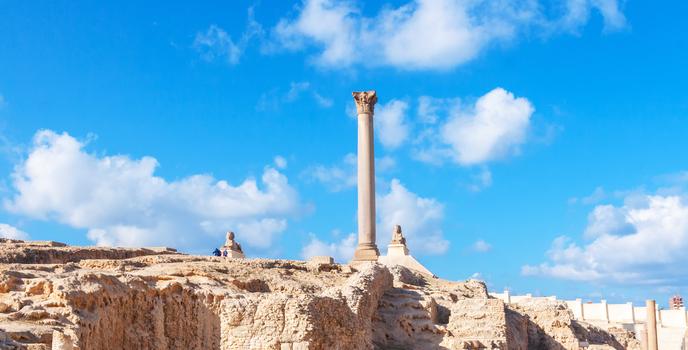
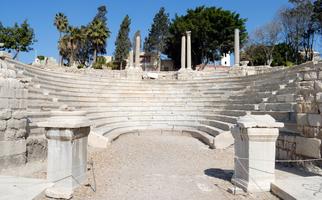
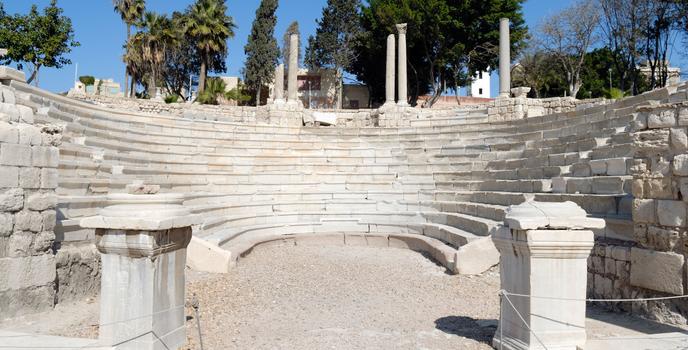
1. Pompey's Pillar: A Memorial to Diocletian
This triumphal column is one the largest monoliths ever erected in the age of the Roman Empire, and the last ancient monument left in the city of Alexandria. At over 80 feet tall and weighing hundreds of tons, this massive pillar of red sandstone is staggering. Nearby, a wonder of the medieval world hides beneath the ground: the Catacombs of Kom el Shoqafa. This burial site, thousands of years old, is held up by Roman columns and painted with Egyptian motifs - an eerie space to wander.
2. Bibliotheca Alexandrina: Risen from the Ashes
Set on the gorgeous Mediterranean, this contemporary rendition of the Alexandria Library attempts to revive the glory of its ancient counterpart, burned to the ground during antique times. The scale of the new building is vast, with world-renowned architecture dazzling from tip to toe. Millions of books are housed here, reading room spaces include facilities for the blind, as well as for children. The National Museum and a planetarium are also found inside.
3. Montaza Palace: Mediterranean Masterpiece
Set amidst gardens and overlooking a beach on the sparkling Mediterranean Sea, this palace is a must-see. The architecture combines Turkish and Florentine influences, an indication of the conglomeration of cultures found in Alexandria throughout the ages. Ornate and delicate, the palace finds itself in its own little paradise - royal gardens are open to the public for hours of leisure, and long open halls built into the structure lead visitors to views of the sea.
4. Citadel of Qaitbay: In Defense of the City
For centuries the defense of Alexandria relied on this 15th-century fortress, one of the most important fortifications on the entire Mediterranean coast. Built on the site of the destroyed Lighthouse of Alexandria, once a Wonder of the Ancient World, this citadel has withstood the test of time. Visitors can wander the ancient ramparts and enjoy some historical context in the Qaitbay Maritime Museum. And for a trip further afield, check out the Ras el-Tin Palace just thirty minutes away.
5. Kom el-Dikka: Fancy Remants
The Roman Amphitheater of Kom el-Dikka is an archaeological highlight of Alexandria and the only ruin of its kind in Egypt. It was discovered beneath a pile of sand in the 20th century, when massive columns were found buried nearby. Sadly, most of the ruins had already been toppled during the 6th century due to a great earthquake, but the site has since been reconstructed. Incredible mosaics decorate the floors, and a walk through the grand ruins takes you back to a society of the past.




Where to Eat in Alexandria
Seafood is the main attraction for gastronomes in Alexandria, which is one of the best places on the Mediterranean to find affordable gourmet dishes. Head straight for established high-end places like Byblos, Athineos, La Veranda, or Ibn el-Balad or try lesser-known gems like Kushari Bondok, which specializes in kushari (featuring layers of macaroni, rice, lentils, and tomato sauce). Expect a meal at the best restaurants to cost about E£200.
When to visit Alexandria
Summers are blazing hot in Alexandria, but with the city beaches available when you need them and plenty of shady gardens in town, cooling off isn't a problem. However, crowds can be, so try a vacation in April or May or September or October to enjoy great weather and a more relaxing sightseeing experience.
How to Get to Alexandria
Plane
Borg el Arab Airport (HBE) is the main entry point for visitors from North America (although a transfer in Dubai or Istanbul may be needed along the way). When you touch down, you might be able to catch one of two daily buses (E£10, buses leave at 10:30 am and 4:30 pm). A taxi is more realistic though, and will set you back around E£150.
Train
Catching the train from Cairo's Ramses Station is a wonderful way to arrive in Alexandria (particularly as there are plenty of daily flights from the USA to Cairo). Try to ensure that you catch a "Turbo" service, as slower trains won't always have air conditioning, a real essential in the Egyptian climate.
Car
Renting a car from the airport is a good idea, and you'll find branches of Budget and Europcar at the arrivals terminal. To get into town, follow highway 75 straight into downtown Alexandria. If you are driving from Cairo, highway 75 is the fastest road to take, but you can also follow the road through Tanta, which features scenic sections through the Nile Delta.
Bus
There's no shortage of bus services between Cairo and Alexandria, with companies operating on the route including Super Jet, West Delta, Golden Arrow, and El Gouna. Expect the journey time to last around three hours.
Airports near Alexandria
Airlines serving Alexandria
Where to stay in Alexandria
The Corniche - designed by Italian architect Pietro Avoscani, the Corniche is a stunning seafront boulevard that runs from the impressive Qaitbay Citadel around 10 miles to the Montaza Palace. The section in downtown Alexandria is the place to find great restaurants like Kadoura or Grand Cafe, along with the city's excellent beaches.
Popular Neighborhoods in Alexandria
Downtown Alexandria - walk a short distance inland from the Corniche and you'll get to Downtown Alexandria. Packed with stores, markets, cinemas, museums, and galleries, this is really the heart of Alexandria as far as most tourists are concerned.
San Stefano - just east of the city center, San Stefano is much more upmarket, hosting some of the city's most luxurious hotels and shopping malls like the San Stefano Plaza. With a pleasant coastal location and good access to the center of Alexandria, it's a popular base for vacationers as they explore the city.
Where to stay in popular areas of Alexandria
Most booked hotels in Alexandria
How to Get Around Alexandria
Public Transportation
Trams and buses are the main ways to get around Alexandria, and the cheapest too. Single tram fares cost just E£0.50, and the Ramleh Line is a great way to travel along the Corniche. Bus fares vary between E£0.50 and E£1.50.
Taxi
If you need to get somewhere quickly in central Alexandria, taxis are essential, but tourists need to exercise caution when using them. That's because very few Alexandrian taxis use meters, so agree on a price before you set out. A popular option is to ask drivers to act as guides for the day (or even week) and many locals will be happy to agree on a price to do so. Expect to pay around E£100 per day for the privilege.
Car
If you want total freedom (and the ability to explore the coast and the Nile Delta), renting a car is always a possibility. You'll find companies like Budget, Europcar, and Hertz represented in Alexandria - expect to pay around E£120 per day. Be aware that Egyptian drivers aren't shy about using their horns, and you'll be expected to do the same. Other than that, drive sensibly and you should be fine.
The Cost of Living in Alexandria
Shopping Streets
If you fancy an adventure, why not dive into the winding streets of the Souq district off Midan Tahrir, or peruse the stalls at the huge Attareen antiques market? The latter is a great place to pick up souvenirs like perfumes, carpets, and assorted antiques. A much more conventional shopping experience can be found at malls like San Stefano Grand Plaza or Mirage Mini Mall.
Groceries and Other
Local supermarket chains include Dinosaur, Spinneys, Carrefour, and Zahran, which tend to be dotted around Downtown Alexandria. Food prices are around E£40 for a gallon of milk and E£15 for 12 eggs.
